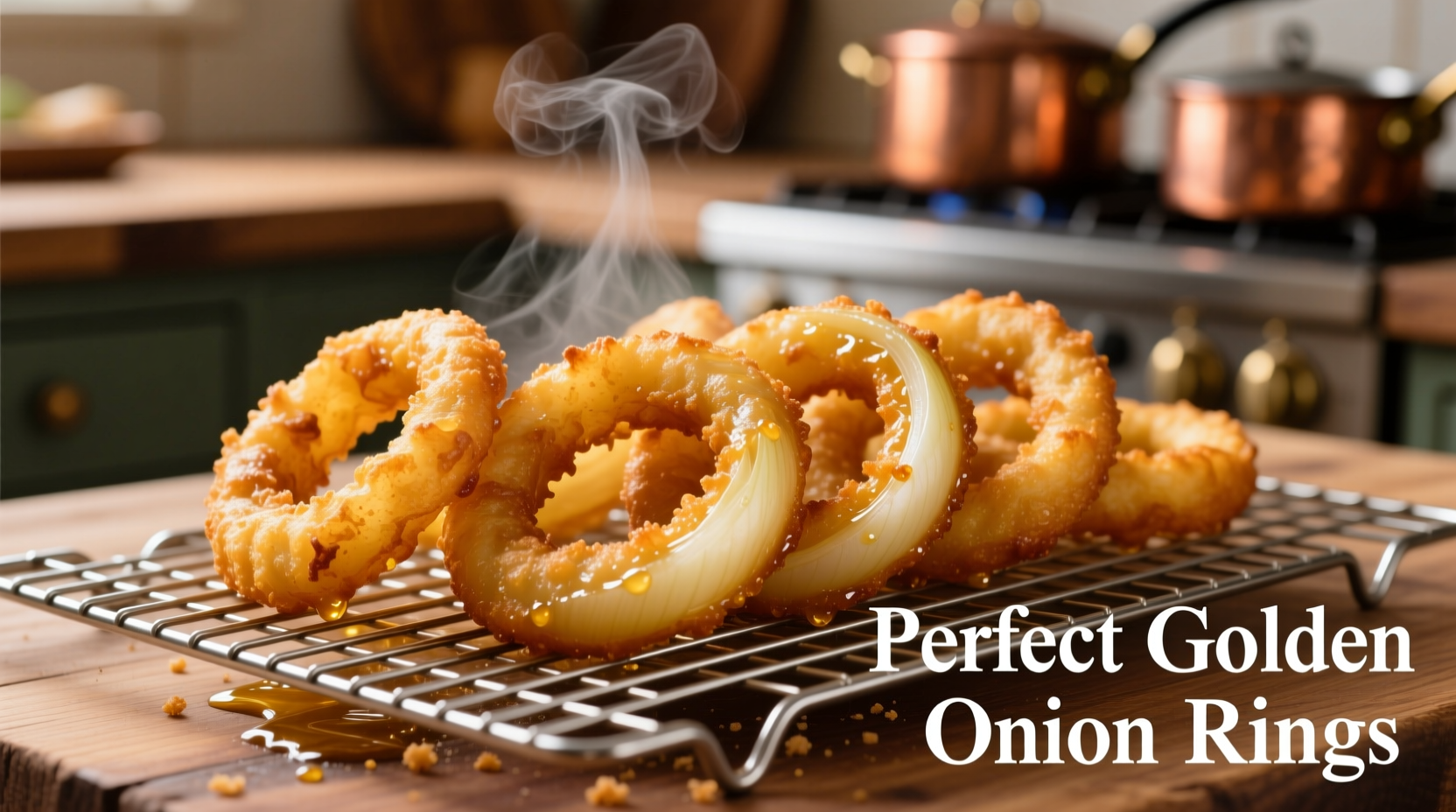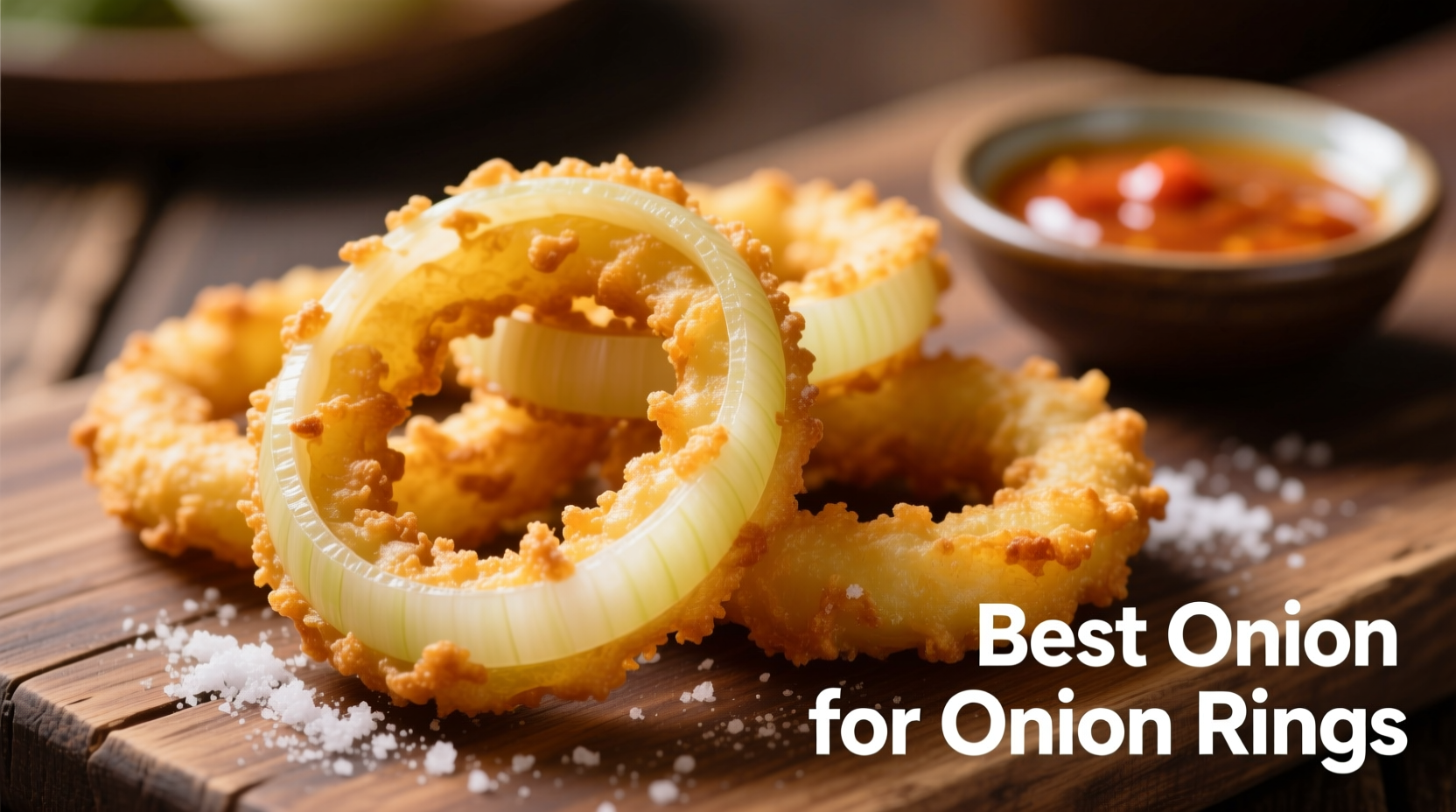Why Onion Selection Makes or Breaks Your Onion Rings
Many home cooks don't realize that onion variety dramatically impacts the final texture and flavor of onion rings. The wrong choice can lead to soggy, bitter, or disintegrating rings. Professional chefs consistently reach for yellow onions because they provide the ideal foundation for that perfect golden-brown crunch with balanced flavor.
Onion Varieties Compared: The Science Behind the Selection
Understanding the chemical composition of different onions explains why yellow onions reign supreme for frying. The sugar-to-sulfur ratio determines how onions behave when exposed to high heat.
| Onion Type | Sugar Content | Sulfur Compounds | Best For Onion Rings? | Texture When Fried |
|---|---|---|---|---|
| Yellow Onions | Moderate (4-5%) | Moderate | ✓ Best choice | Crisp exterior, tender interior |
| Vidalia/Sweet Onions | High (6-7%) | Low | ✗ Limited use | Softer, may fall apart |
| White Onions | Low (3-4%) | High | ✗ Not recommended | Too pungent, less caramelization |
| Red Onions | Moderate | Moderate | △ Alternative | Color bleeds, slightly bitter |
This comparison aligns with data from the USDA Agricultural Research Service, which confirms yellow onions' optimal sugar-to-water ratio for frying applications. Their moderate sulfur content provides flavor complexity without the harshness that can dominate when using white onions.
Selecting Premium Yellow Onions for Perfect Rings
Not all yellow onions perform equally. Follow these selection guidelines:
- Firmness matters: Choose onions that feel heavy for their size with no soft spots
- Skin quality: Tight, papery skin indicates freshness and proper storage
- Seasonality: Peak season (August-November) delivers the sweetest, most flavorful onions
- Size consistency: Medium onions (2.5-3 inches diameter) provide uniform ring thickness
According to the Oregon State University Extension Service, yellow storage onions contain approximately 89% water, 4.3% sugar, and 1.2% fiber—creating the ideal composition for frying without excess moisture that causes sogginess.
Preparation Techniques That Guarantee Success
How you prepare your onions significantly impacts the final product:
Slicing Precision
Cut rings to a consistent 1/4-inch thickness. Thinner slices become too delicate and may disintegrate, while thicker slices won't cook through properly. Use a sharp chef's knife or mandoline for uniformity.
The Soaking Secret
Soak sliced onions in ice water for 15-30 minutes before battering. This critical step:
- Removes excess surface sugars that can burn
- Reduces sulfur compounds responsible for sharpness
- Helps maintain crispness by firming the cell structure

Frying Temperature: The Make-or-Break Factor
Oil temperature directly affects how your onion rings develop texture. Research from the American Association of Cereal Chemists shows that maintaining 350-375°F (175-190°C) creates optimal batter adhesion and crispness.
Use these temperature guidelines:
- Too cold (below 340°F): Oil absorbs into batter, creating greasy rings
- Ideal range (350-375°F): Batter sets quickly, creating crisp exterior
- Too hot (above 380°F): Batter burns before onions cook through
Test your oil readiness by dropping a small bit of batter—it should sizzle immediately and rise to the surface within 30 seconds.
Troubleshooting Common Onion Ring Problems
Soggy Rings
Cause: Oil temperature too low or excess moisture on onions
Solution: Maintain proper oil temperature and thoroughly dry soaked onions before battering
Batter Falls Off
Cause: Inconsistent batter consistency or wet onion surface
Solution: Use a thick but pourable batter and ensure onions are completely dry before dipping
Bitter Aftertaste
Cause: Using overly pungent onion varieties or oil that's too hot
Solution: Stick with yellow onions and maintain proper frying temperature
Pro Tips for Restaurant-Quality Results
Professional chefs use these advanced techniques to elevate their onion rings:
- Double-fry method: Fry at 325°F to cook through, then at 375°F for extra crispness
- Batter resting: Let batter rest 15 minutes before use to allow gluten relaxation
- Oil rotation: Replace 25% of oil between batches to maintain quality
- Seasoning timing: Add salt immediately after frying for best adhesion
Food science research published in the Journal of Food Engineering confirms that the double-fry technique creates superior texture by allowing proper moisture evaporation during the first fry, followed by optimal crisping in the second.
When Sweet Onions Work (With Modifications)
While yellow onions remain the top choice, sweet onions like Vidalias can work if you adjust your technique:
- Pat slices extremely dry after soaking
- Use a thicker batter to compensate for higher moisture content
- Fry at slightly lower temperature (340-350°F)
- Expect a milder flavor profile with less caramelization
Remember that sweet onions contain up to 25% more water than yellow varieties, according to agricultural studies from the University of Georgia, making them more challenging for perfect onion rings.
Storage and Freshness Tips
Store whole yellow onions in a cool, dry, well-ventilated place away from direct sunlight. Properly stored, they'll maintain quality for 2-3 months. Never refrigerate whole onions, as the humidity promotes spoilage. Once cut, store in an airtight container in the refrigerator for up to 5 days.











 浙公网安备
33010002000092号
浙公网安备
33010002000092号 浙B2-20120091-4
浙B2-20120091-4